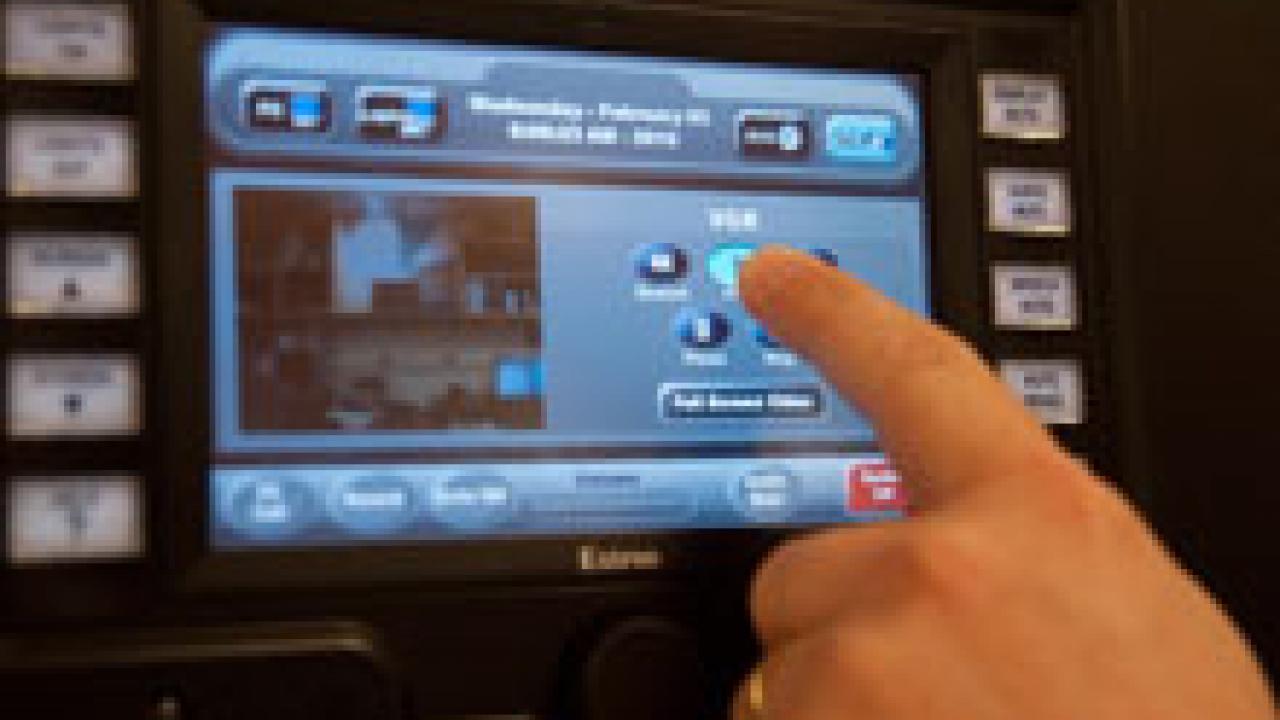UC Davis professors are boosting the classroom learning process through new technology — in many ways, Internet-savvy students are setting the pace.
James Housefield, assistant professor of design, history, theory and criticism took an innovative step when he replaced hard copy notebook journals with student blogs. It was clear to him that students were embracing the blogosphere, one of the social media aspects of the Internet.
Housefield faced the challenge of transforming lengthy two-hour lectures into interactive experiences for students.
“I often am self-consciously aware that I am working like a DJ to ‘mix’ materials as we shift from spoken word to visual imagery to music to film to sound to material objects to physical manipulations,” he said.
For starters, his students are required to maintain a blog, posting at least 24 entries. According to Housefield, “The blog is a form of contemporary essay that is in a state of great development. It needs to get in and out in a few sentences and make interesting, well-grounded conclusions along the way.”
The blog format lends itself to personal creativity. Another student of Housefield’s, Sarah Laudenslayer, a freshman design major, used 16th and 20th century paintings to exemplify contrasting images of women and the social role they played in an entry, Representations of Women in Art.
“I have always been fascinated by the social impact of art and the way in which it interacts with various cultural movements,” she said.
Voices of creativity
Prerna Dudani, junior design major and art history minor, has enjoyed blogging so much in Housefield’s class that she intends to keep doing it after the class is finished.
Initially, she found it difficult to attract an audience — blogs sink or swim in the vastness of the Internet — but now that Dudani has a small following, she hopes readership will continue to increase. Dudani is a self-described “witness to the power of viral marketing.”
The students even challenged Housefield to create a blog himself — he did so, and became a blog enthusiast.
“These design students are doing what designers have to do daily — they develop a public voice in which creativity is combined with communication and logical thought,” Housefield said.
The use of Wikipedia, with user-developed articles on over 3.1 million topics, has become a big learning tool, though it is not always the most credible source for information.
It’s the wiki format — not the content — that makes it ideal for sharing information. Sometimes the wiki can be a “book” of sorts.
Bert Baumgaertner, a doctoral student in philosophy, used the wiki feature of SmartSite as a place where students could communicate with each other when he served as a teaching assistant for an introductory class in philosophy.
“The idea was, if students had a medium to collaborate and share their notes, they would get a better understanding of the material,” he said.
In the chemistry department, what began as a SmartSite wiki became a long-term enterprise to eventually supplant a physical textbook.
Delmar Larsen is the creator and director of ChemWiki. An assistant professor of chemistry, Larsen developed an entire online encyclopedia to provide a free resource for students confronting the prospect of buying expensive textbooks every quarter.
Why? He had noticed that students were seeking affordable and innovative ways to improve their educational experiences.
“As students write, they internalize and evaluate, which intrinsically reinforces the principles of what they are learning. The second thing is that I feel an online resource has a lot of capabilities — hypertext, hyperlinking, etc. In chemistry, essentially every topic is addressed online.”
Larsen noted, “My goal is to make a net and bring in as much as possible.”
Faculty members and graduate students, using strict criteria, review undergraduate student contributions. The purpose is to make it as credible as a textbook.
“We brought students into the development and not experts because I wanted to address all levels of chemistry from pre-college to graduate level,” Larsen said.
Eyes, ears from afar
Using tools in the classroom is one thing IET-Academic Technology Services spends a lot of time studying. In particular, ATS is looking to speed up tech support with remote technology to control classrooms.
“If a faculty member has pushed a wrong button, we can push the right buttons from our desk,” explained Joe Kelley, manager of audio visual equipment. “We can look at any piece of equipment, such as laptop and projectors, so long as it is plugged in, and see if it is functioning properly.”
The campus has three classrooms wired for a remote technology pilot project, Kelley said. It is possible that remote technology could one day be used in all UC Davis classrooms, he added.
GOING MOBILE
Beyond faculty members, students are driving technology advances on campus. This winter’s release of the iPhone application UC Davis Mobile is a shining example of innovation in the student ranks.
UC Davis Mobile is a free iPhone app created by two students, Sunny Dhillon, a senior computer engineering major, and Fei Li, a senior computer science major. The app was the product of an engineering class on iPhone development.
‘Window into the world’
Not surprisingly, the iPhone class was highly popular with students.
The instructor, engineering professor Ken Joy, said, “Mobile applications are a window into the world of a tremendous amount of data.”
Barely a week after its January release, UC Davis Mobile was downloaded more than a thousand times. A wealth of Aggie detail, it includes information on departments, the campus directory, courses, e-mail, maps, athletics, bus schedules and media.
Joy said, “Later on, you will be able to point your iPhone at a building, take a picture, and get more information about that building.”
Mobile phone technology offers bright, new possibilities for all members of the campus community, the students say. An updated version of UC Davis Mobile is expected to be released by summer.
Nicole Nguyen is a Dateline intern.
Media Resources
Clifton B. Parker, Dateline, (530) 752-1932, cparker@ucdavis.edu
